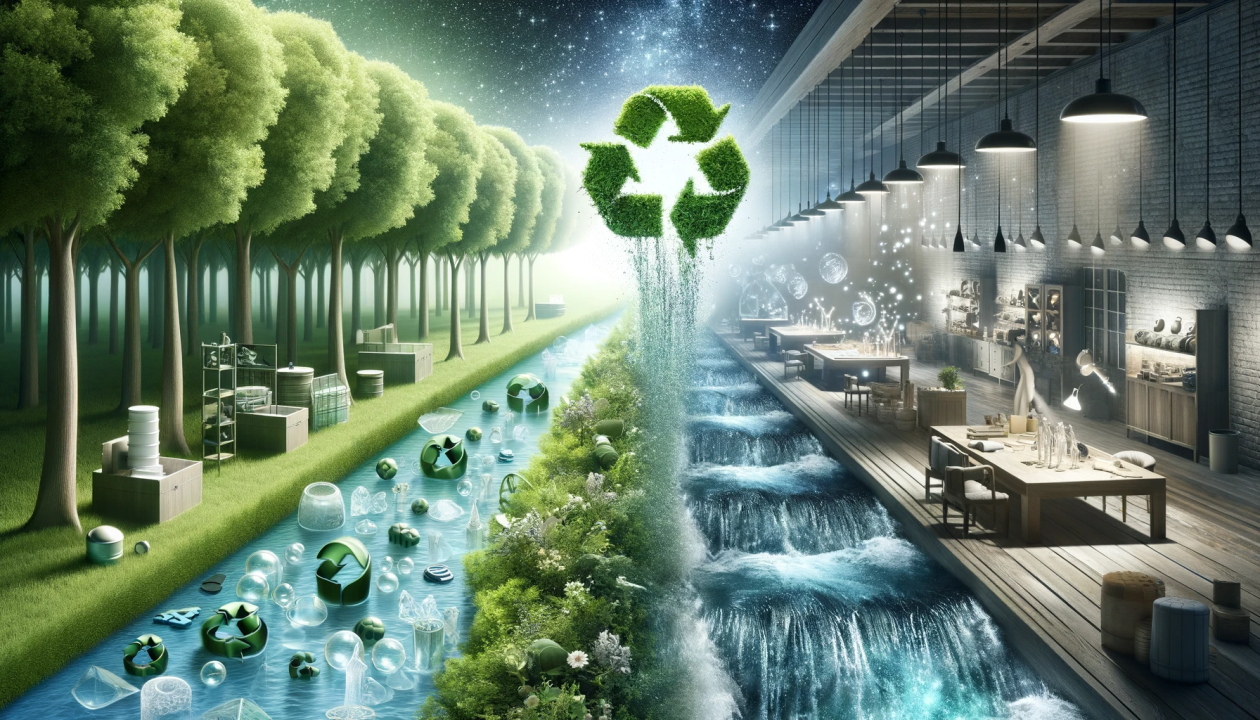The Complex Challenge of Material Sourcing in Luxury Goods
The luxury goods sector, known for its stringent quality standards and opulent appeal, faces a daunting challenge in aligning with environmental sustainability, particularly in meeting Scope 2 and 3 emissions criteria. These scopes, part of the Greenhouse Gas (GHG) Protocol, extend beyond direct emissions (Scope 1) to include indirect emissions from purchased energy (Scope 2) and all other indirect emissions across a company's value chain (Scope 3).

Why is this a Herculean Task?
𝗗𝗲𝗺𝗮𝗻𝗱 𝗳𝗼𝗿 𝗛𝗶𝗴𝗵-𝗤𝘂𝗮𝗹𝗶𝘁𝘆 𝗠𝗮𝘁𝗲𝗿𝗶𝗮𝗹𝘀: Think of Luxury. Many Brands come to mind but they all have a task unlike any they've faced before... To maintain their opulent standards they need rare or unique materials. Achieving this sustainably, while not compromising on quality, is a complex undertaking. The entire journey of these materials – from extraction to production, and finally transportation – often involves significant energy consumption and GHG emissions, making the fulfilment of Scope 2 and 3 criteria a challenging puzzle.
𝗖𝗼𝗺𝗽𝗹𝗲𝘅 𝗦𝘂𝗽𝗽𝗹𝘆 𝗖𝗵𝗮𝗶𝗻𝘀: The global and intricate nature of supply chains in the luxury goods sector adds to the complexity. For example, a single handbag might source leather from Italy, hardware from Germany, and craftsmanship from France, complicating the task of tracking and managing the carbon footprint at each stage. Ensuring suppliers adhere to sustainable practices, especially across varied environmental regulations, involves navigating a labyrinth of global standards.
𝗖𝗼𝗻𝘀𝘂𝗺𝗲𝗿 𝗘𝘅𝗽𝗲𝗰𝘁𝗮𝘁𝗶𝗼𝗻𝘀: Luxury markets thrive on exclusivity and brand perception. Striking a balance between environmental sustainability and maintaining a brand's legacy – a brand's commitment to timeless elegance or exalted class, for example – is akin to walking a tightrope. Any shift in material quality or design to meet sustainability goals risks altering the perceived value of the products.
𝗧𝗲𝗰𝗵𝗻𝗼𝗹𝗼𝗴𝗶𝗰𝗮𝗹 𝗮𝗻𝗱 𝗜𝗻𝗻𝗼𝘃𝗮𝘁𝗶𝘃𝗲 𝗗𝗲𝗺𝗮𝗻𝗱𝘀: The pursuit of sustainability often leads to investing in new technologies and innovative materials. For luxury brands, this means extensive research into sustainable alternatives that still meet their high-quality standards. This journey is not just costly but also time-consuming, like a quest for modern alchemy.
𝗥𝗲𝗴𝘂𝗹𝗮𝘁𝗼𝗿𝘆 𝗛𝘂𝗿𝗱𝗹𝗲𝘀: Navigating the intricate web of international regulations and certifications for sustainable practices is another challenge. Diverse standards and regulations across countries, like the EU's strict environmental laws versus other regions, make it difficult for luxury brands to maintain a consistent approach in all markets.
𝗠𝗼𝘃𝗶𝗻𝗴 𝗙𝗼𝗿𝘄𝗮𝗿𝗱
Despite these challenges, there's a growing movement within the luxury goods industry towards sustainability. Brands are progressively investing in innovative materials and supply chain transparency to reduce their carbon footprint. This journey to align with Scope 2 and 3 criteria represents not just a responsibility but also an opportunity for luxury brands to lead by example in the global effort towards environmental sustainability. As consumers become more environmentally conscious, brands like Gucci, Chanel, and others are finding that the path to sustainability is not just an ethical imperative but also a business necessity. 🌍✨
More articles like this

A look into the future: BEV or FCEV—What AI has to say
AI-driven insights reveal why LFP batteries paired with graphene-coated silicon anodes are set to dominate EVs. This report outlines the breakthrough in energy density, Europe’s lag in adoption, and what automakers must do now to stay competitive in the global electric vehicle race.
Odin Platform Update – New Features & Improvements
We’re thrilled to introduce a range of new features and improvements on the Odin platform, designed to make your research and innovation process even more seamless. From chatting with up to 1,000 patents at once, to clickable patent links, complete patent references, and enhanced control over patent chats—this update is packed with powerful tools. Plus, our new Tracking Workflows feature helps you stay on top of critical changes in your patent sets effortlessly. Read the full post to explore how these updates can supercharge your work!

The Complex Challenge of Material Sourcing in Luxury Goods
The luxury goods sector, known for its stringent quality standards and opulent appeal, faces a daunting challenge in aligning with environmental sustainability, particularly in meeting Scope 2 and 3 emissions criteria. These scopes, part of the Greenhouse Gas (GHG) Protocol, extend beyond direct emissions (Scope 1) to include indirect emissions from purchased energy (Scope 2) and all other indirect emissions across a company's value chain (Scope 3).
Reach out to us!
Start a conversation. We are happy to help.
.svg)



